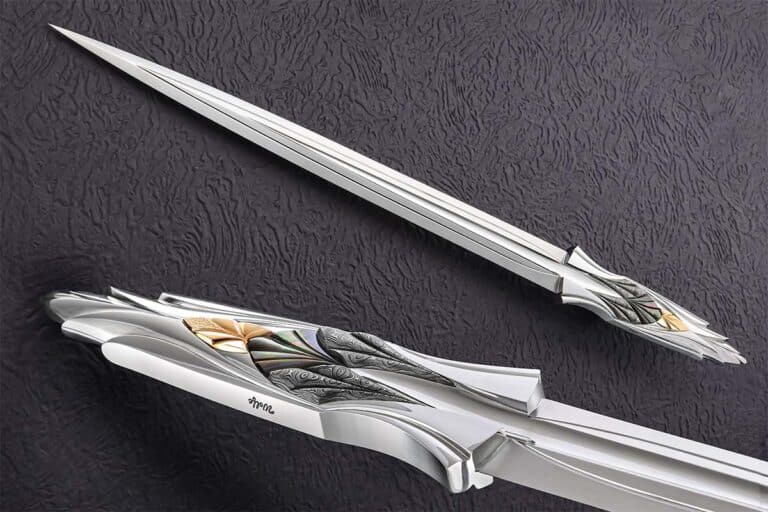To Bling or Not to Bling?
The best knives and stories are born from some essential reality that grows in the making and telling. For a knife, it is the nature of that reality that determines whether the ornamentations available to the knifemaker either reveal or conceal it. Simply put, some knives benefit from the generous application of various bells and whistles. Others are diminished by any additions beyond their essential form. Most fall somewhere in-between these extremes. But how do you tell the difference?
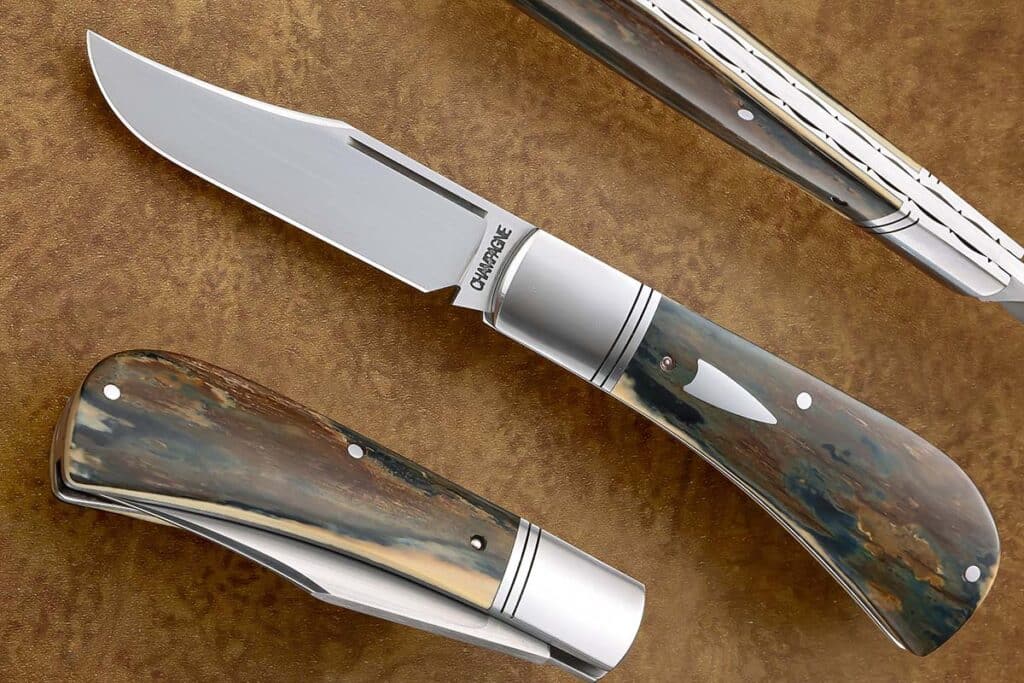
First, consider that much like the vehicle you drive, the knife you carry or make says something about you. It can shine light on your character, priorities, economic or social status, or simply your tastes. Each knife can reflect something important about the maker, or it can evoke a response from the person that encounters it. As the maker, what story are you trying to tell and to whom are you trying to tell it? Any embellishment should be designed to ensure that that something is exactly the thing you want to say.
A Lanny’s Clip slipjoint (IMAGE 1) by Ben Champagne is an example of how even a minimally embellished knife sends a clear message about the maker’s character. Every detail matters, even the ones that are invisible. Immaculate execution is a statement of its own.
In addition, each type of knife serves an essential purpose. Often the purpose is reflected in the name of the knife’s category—everyday carry (EDC), hunter, fighter, chopper, chef’s, even art knife—or by its shape, history and tradition, as in the case of daggers, machetes and bowies. In each case the design is constrained by the intended use, though with varying degrees of success.
Once you have a clear idea what your knife is for and the impact you want it to have, it is useful to write those down. The process of articulating your purpose in words has a way of clarifying things, and helps you keep a firm grasp on your idea as you move forward with your design. You have a much greater chance of creating an excellent knife if you allow your intent to guide your design decisions.
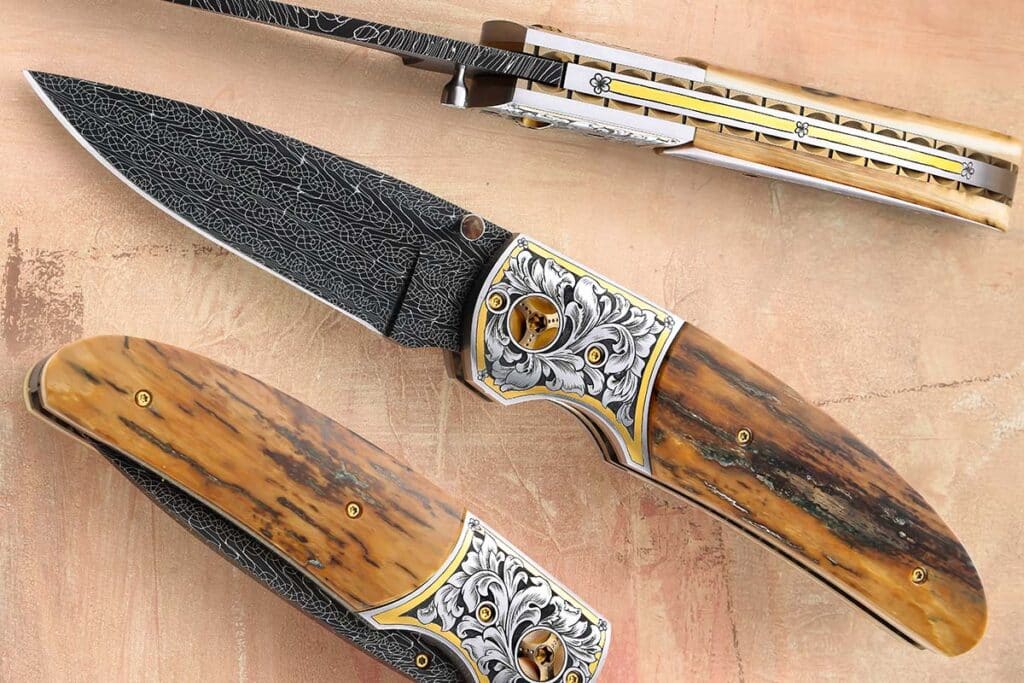
A good next step is a detailed drawing, which will help you think through the details in a coherent manner; it is much easier to work through various design elements, material choices and additional embellishment ideas with a pencil than with steel. Here is your chance to test different ideas, keeping in mind that there will most certainly be deviations from your drawing that occur during the actual making process. Some ideas look good on paper but don’t translate as imagined into a three-dimensional object. The opposite is also true, and embracing the back-and-forth process yields the best results. Producing a cohesive design aligned with both your intended statement and the knife’s function is a process that often continues until the knife is complete.
Making A Knife Embellishment Plan
I don’t always embellish a knife, but when I do, I do it on purpose.
As you have gathered by now, the most valuable embellishment available to the knifemaker is outstanding, intentional design. Consequently, the best knives are those in which embellishments are specific, intentional design choices. Intentionality is essential; if you want to be good at something, you should do it on purpose. If a particular choice of ornament does not contribute to the function, visual impact or the statement you wish to make in a noticeable way, omit it. At the very least, choices of ornamentation should never inhibit the essential purpose of the knife.

Selecting Type Of Knife Embellishment
When it comes to specific embellishments for a specific knife there are myriad choices at your disposal, but if you spend too much time thinking about it nothing will get done. Here are some ideas that can help you decide.
The first consideration is to determine what it is you’re trying to draw attention to. Certain shapes or lines like the S-curve, diagonal line and flow, and pointy or sharp triangular elements tend to naturally draw the eye. A dominant visual weight, strong contrasts of color or texture, or intentional disruptions in visual flow can also grab attention if used accordingly.
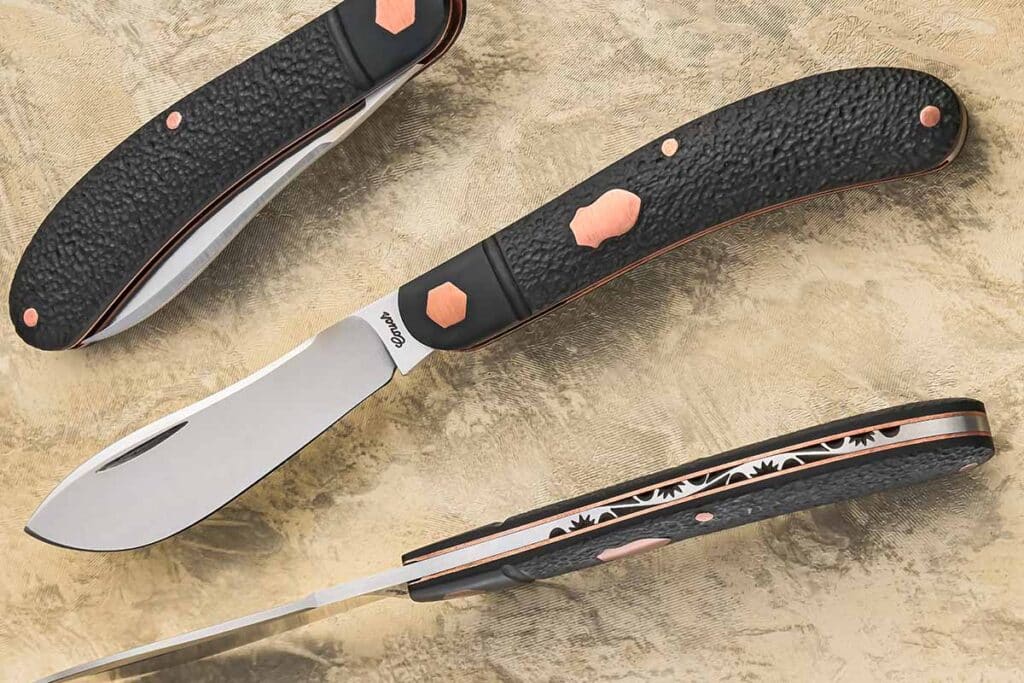
Usually, it is the clever combination of more than one of these elements that makes an arresting visual, and once the attention is firmly grasped the details can reveal themselves. An integral dagger by Wolfgang Loerchner (IMAGE 2) demonstrates how the masterful combination of curves, diagonals and triangles can command notice. Sharp contrasts in texture and color also arrest the eye. Once the attention is captured, it becomes clear that every element of the shape, materials and finish works together to create the essential whole.
The eye is also drawn to areas with more detail. A good rule of thumb is that for it to stand out, the area of sharpest detail should make up about a third of the overall visual composition. By applying this principle, an engraving can be the center of attention, can complement the overall knife design or can distract from it. When engraving is to be the center of attention, other design elements should be allowed to fade into the background. This does not mean that these other details are less important, but a handle with subdued colors and even texture, a satin polished blade, and understated filework will allow the engraving to be the focus.
A boldly patterned damascus blade paired with detailed engraving can overwhelm the eye and keep either element from being visually arresting. Counterintuitively, a finely detailed mosaic damascus blade can present a more neutral visual impact; the details become apparent only when you look closely. A wildly patterned or brightly colored handle material will similarly draw the attention, so use it if the handle material is what you want to visually emphasize.
For example, the mammoth ivory scales, subtle filework and damascus blade of Andy Isaacks’ elegant linerlock folder (IMAGE 3) highlight the detailed engraving by Alice Carter. Every element serves to ensure that the area with most detail draws the eye.
How Not To Embellish A Knife

No discussion about knife embellishment is complete without some reflection on what not to do.
Perhaps most importantly, if you can’t think of a good reason to add a particular type of embellishment, there’s a good chance that you shouldn’t do it. Sometimes it works out but often you waste time and possibly your money by adding elements that lack a clear intent. Similarly, if a knife is intended for hard use, consider what cumulative effects that use will have on your bling, and invest your enhancement efforts accordingly. Where does the value lie?
Despite everything else discussed, it’s worth saying that not every knife needs to be something other than a cutting tool. Indeed, some of the best knives make their statement with simplicity and function. There’s no minimum or maximum amount of embellishment you can add to a knife, but embellishments that aren’t done exceptionally well are worse than none. If you must err, err on the side of simplicity or subtlety. Extravagance can be beautiful but elegance is always understated. Both have a place in the alternatives of intentional design choice.
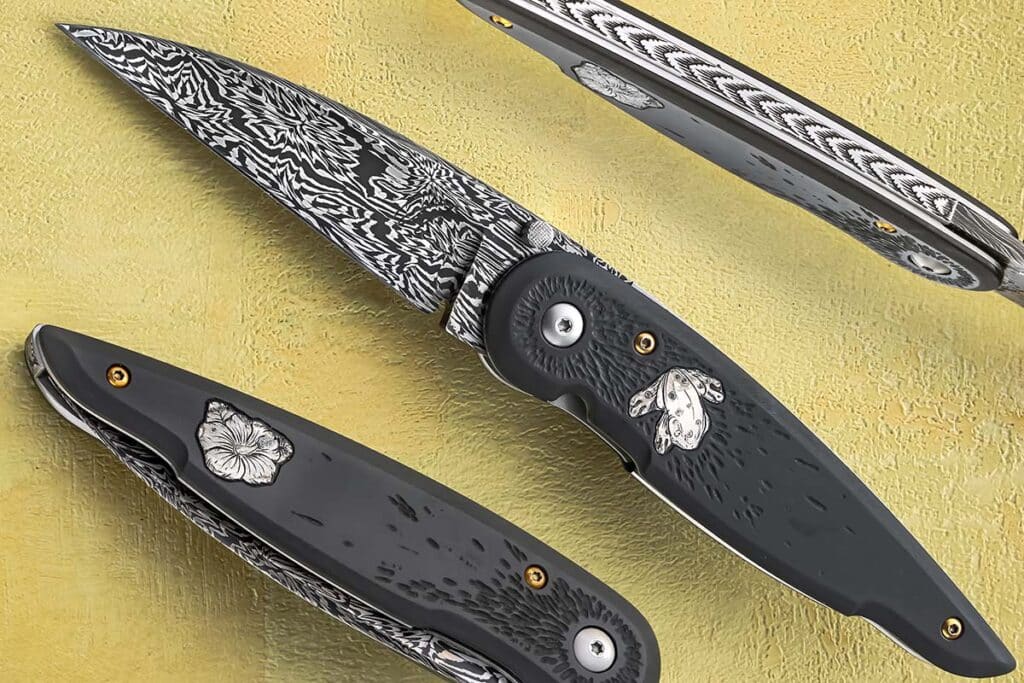
Finally, your knives will benefit from embellishments done purposefully to increase impact, but can suffer from ornamentation added with the sole intent of increasing the sale price. Keep an eye on what’s best for the knife rather than simply tossing in expensive ornamentation for the sake of perceived collector or monetary value.
More On Knifemaking:
- How To: Dellana Dots Opening System
- D.I.Y. POWER HAMMER: DO YOU REALLY NEED ONE?
- STAINLESS DAMASCUS: CHALLENGES IN FORGING
- STROPPING: WHAT IT IS AND HOW IT’S ACCOMPLISHED
- DIY ENGRAVING VISE OR BLOCK


